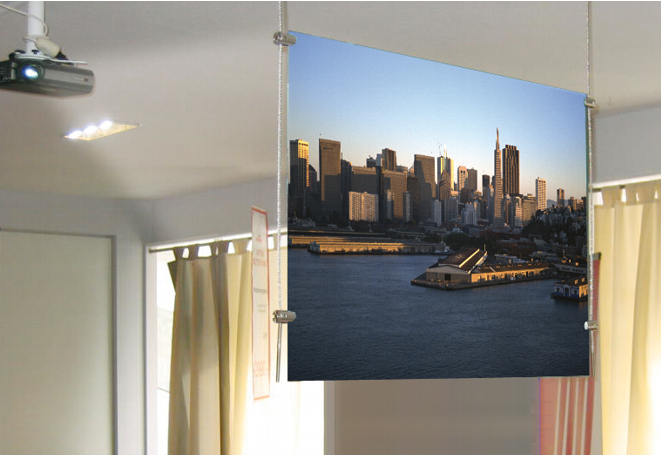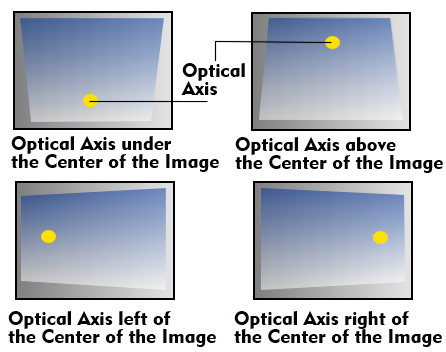projection
Projection involves projecting images or videos onto a projection screen using a projector. If the projection is done from the front of the screen, seen from the viewing side, then it is called front projection; if the projection is done from behind, then it is called rear projection.
The different projection techniques
In front projection, the projected videos are reflected from the projection surface. So it is important that the projectors are bright and the reflection surface reflects the projected videos as much as possible. The strength of the reflection is specified as the gain factor and indicates the ratio of projected to reflected light. In terms of luminous flux, there are projectors with luminous fluxes between 500 lumens and 10,000 lumens and a contrast of 1,000:1.
The situation is different with rear projection. With this projection technique, the video is projected onto a semi-transparent screen from the direction opposite the viewer. To avoid loss of contrast due to stray light, the rear projection can be made from the back of a darkened room onto the projection surface. In this case, the brightness that can be displayed depends strongly on the light absorption and transmission of the projection screen. Since the rear projection is laterally reversed, the projectors must support a corresponding display.
Projection techniques are used in home theaters, digital signage at the point of information, in convention centers, at trade shows, in large-screen advertising, and also in movie theaters. In addition to two-dimensional projection, there is also 3D projection for stereoscopic display.
An interesting variant of the projection technology is the Virtual Retinal Display( VRD), where the image is projected directly onto the viewer's retina using pico or mini projectors. VRD technology is used in head-mounted displays( HMD) and in data glasses, among other applications. Another interesting technique is projection mapping or video mapping with an artistic twist.
Projection errors
Various projection errors can occur during projection. In general, imageoffset and keystone distortions occur. Both distortions occur when the projection axis is not centered on the image and the projection screen is not perpendicular to the projection plane. Short distances between the projector and the projection screen result in uneven image illumination and blurring in the outer image area.


